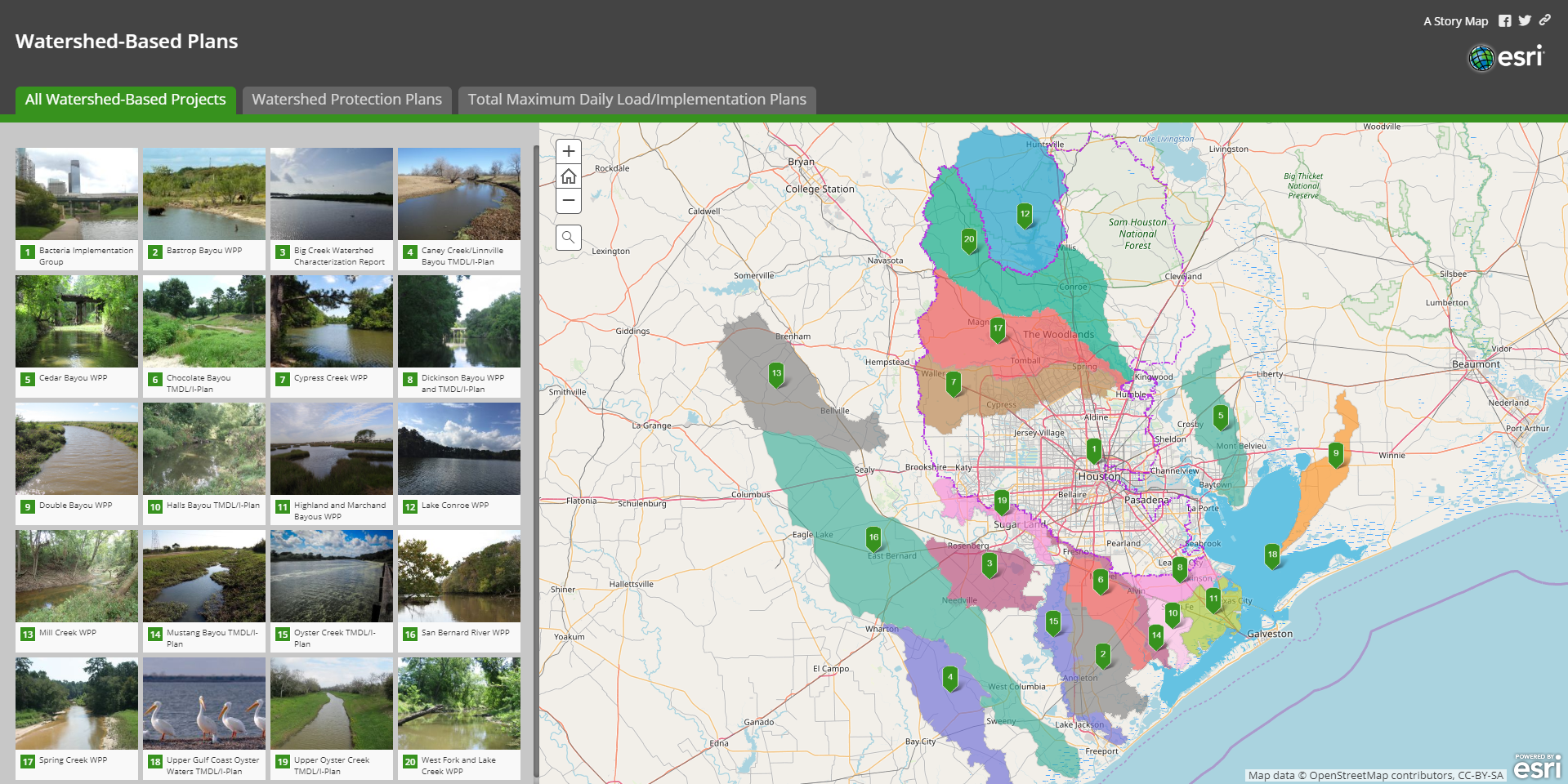On This Page
Watershed-based plans can be categorized into different plan types based on the impairments or concerns of the specific watershed.
Watershed Protection Plans
The State of Texas maintains quality standards to protect the health of local communities and the environment. When surface water quality in water bodies throughout the state fail to meet these standards, local communities can develop Watershed Protection Plans (WPPs) that outline voluntary strategies to improve water quality and other environmental concerns.
WPPs use scientific analyses and local knowledge to outline the most effective strategies for improving water quality in a given area. This process focuses on facilitating groups of local stakeholders who develop voluntary solutions to address current and future contamination sources. Each WPP identifies causes and sources of pollution, necessary reductions to meet state water quality standards, feasible, voluntary solutions, responsible parties, and technical and financial resources needed. These plans also estimate timelines for implementing recommendations and suggest ongoing ways to evaluate the project's effectiveness.
The following projects were supported by technical information and assistance provided by the Houston-Galveston Area Council and the Texas Commission on Environmental Quality. Funding was provided by Clean Water Act §319(h) grants from the United States Environmental Protection Agency.
Total Maximum Daily Load Plans
An alternative approach to assessing water quality within a waterbody is a Total Maximum Daily Load (TMDL) plan. A TMDL is a regulatory process triggered by impairments in a specific stream segment or segments that calculates the maximum amount of a pollutant that a waterbody can receive and still meet water quality standards.
Furthermore, a TMDL ultimately results in an Implementation Plan (I-Plan), which is a formalized, written plan developed by stakeholders to address specific concerns (e.g., bacteria) and contain policy recommendations to bring waterbodies back into compliance.
To address bacteria impairments at a broader scale, the Houston-Galveston Area Council leads the following projects. These projects have developed partnerships with local governments and community organizations to better understand the sources of bacteria and coordinate effective solutions.
View Total Maximum Daily Load Plans
( 5)

Implementation
After a WPP or TMDL I-Plan has been developed, implementation efforts can be carried out to reduce pollutant levels within a watershed. These efforts can vary depending on the priorities indicated by the stakeholders during plan development. The Houston-Galveston Area Council helps to improve water quality throughout the region through programs such as the Homeowner Wastewater Assistance Program for on-site sewage facility repair and replacement, and the Coastal Communities Program that helps to promote education and outreach. Implementation efforts focused on specific areas within the region are listed below.


